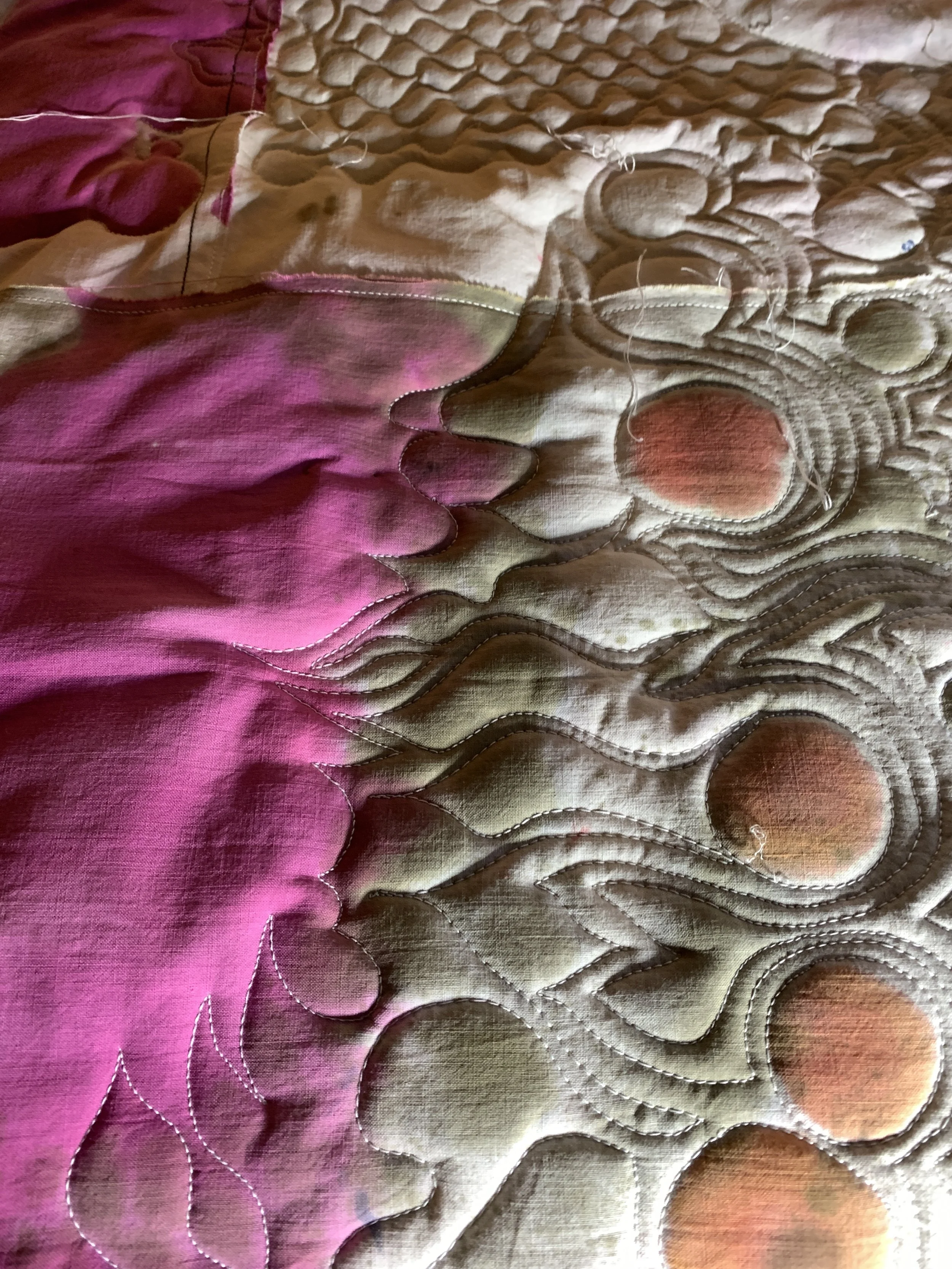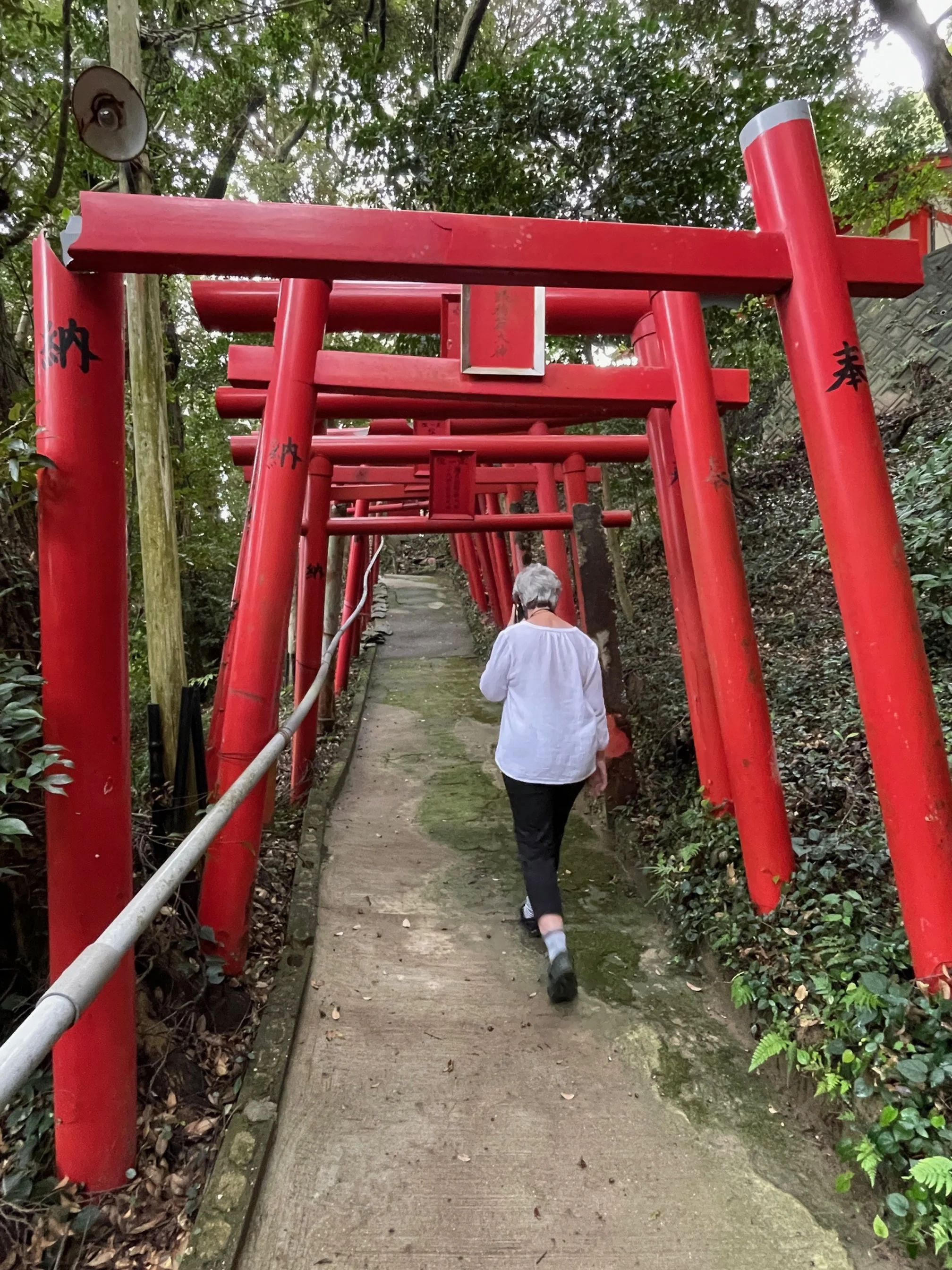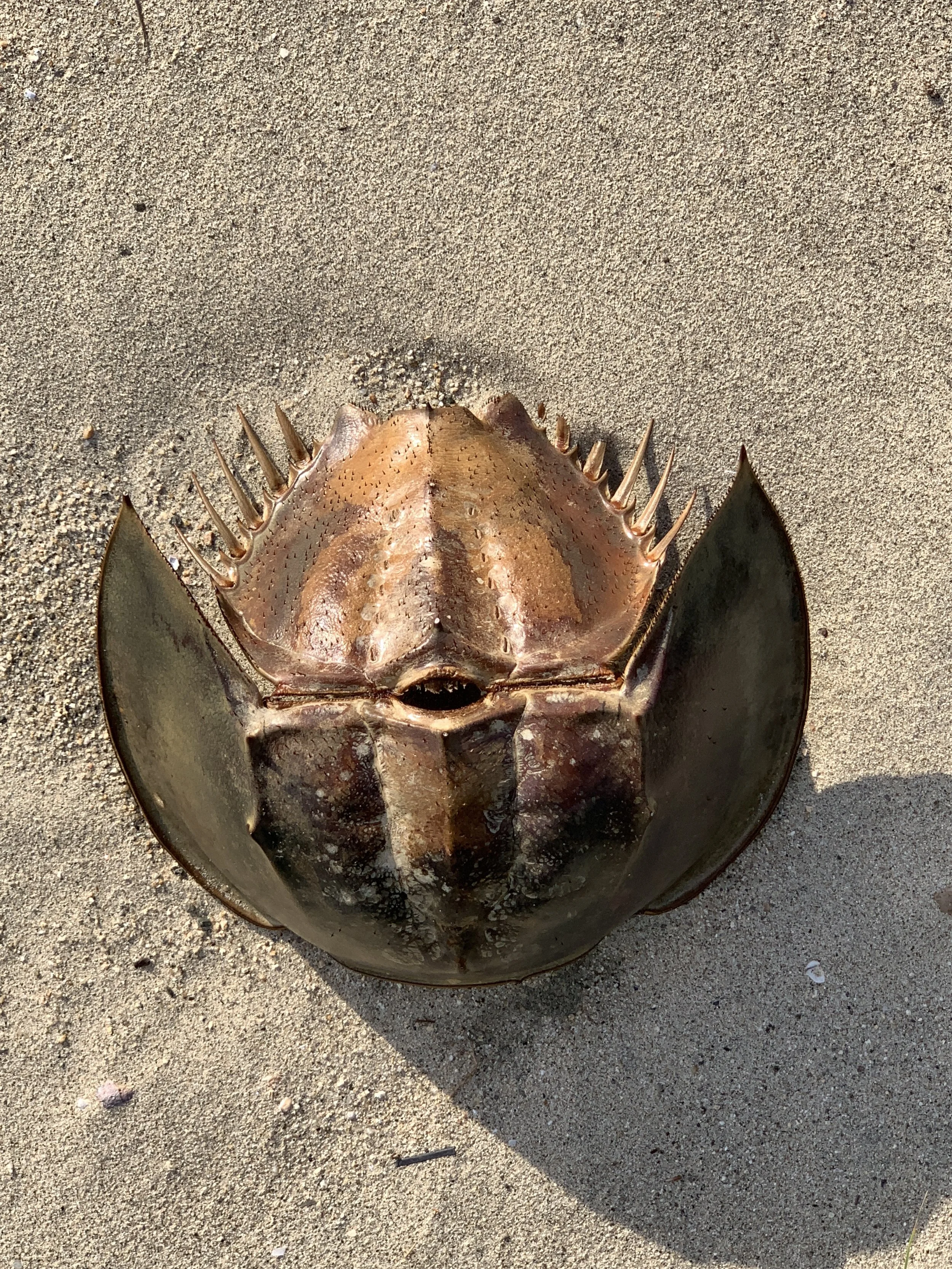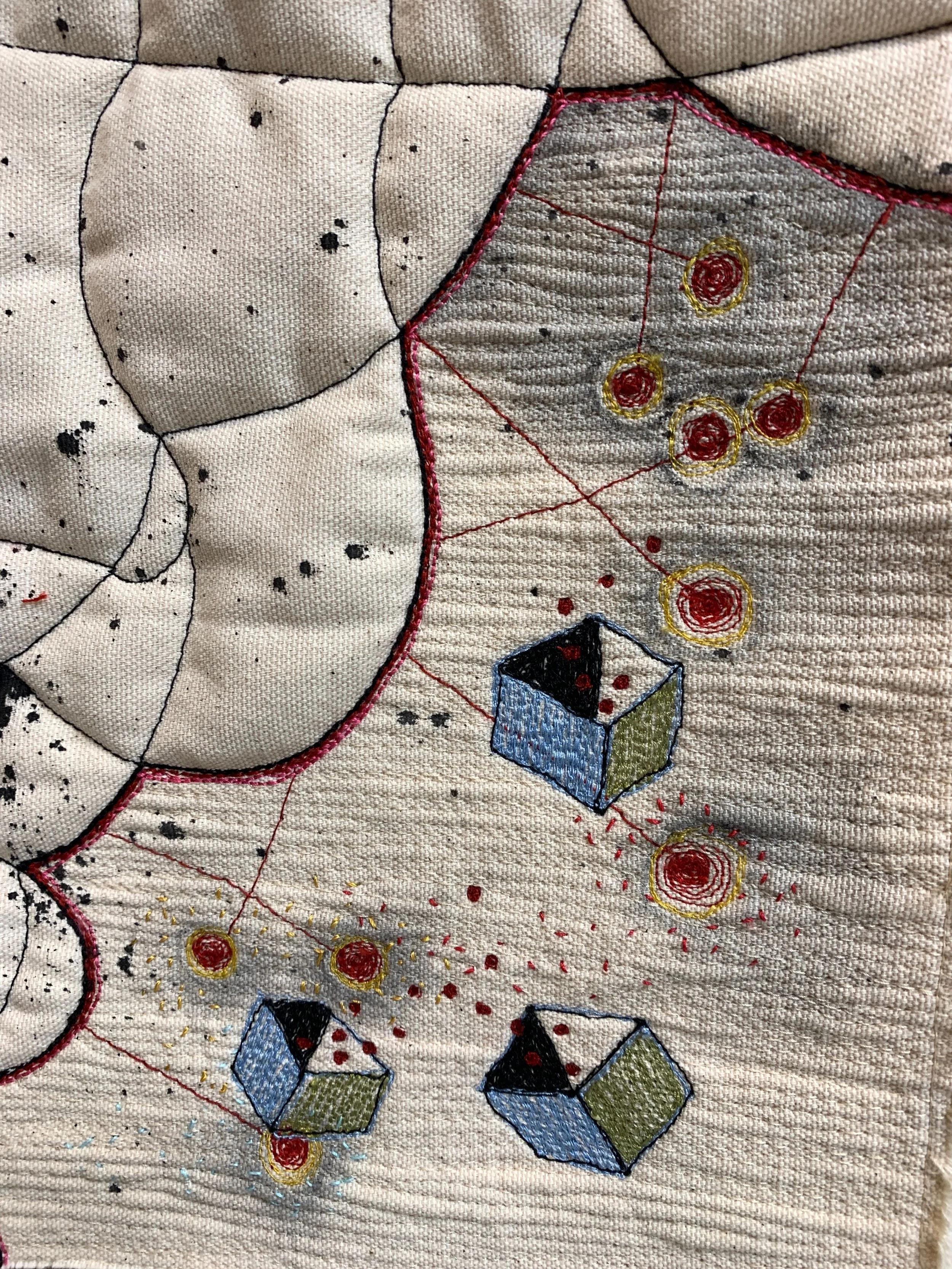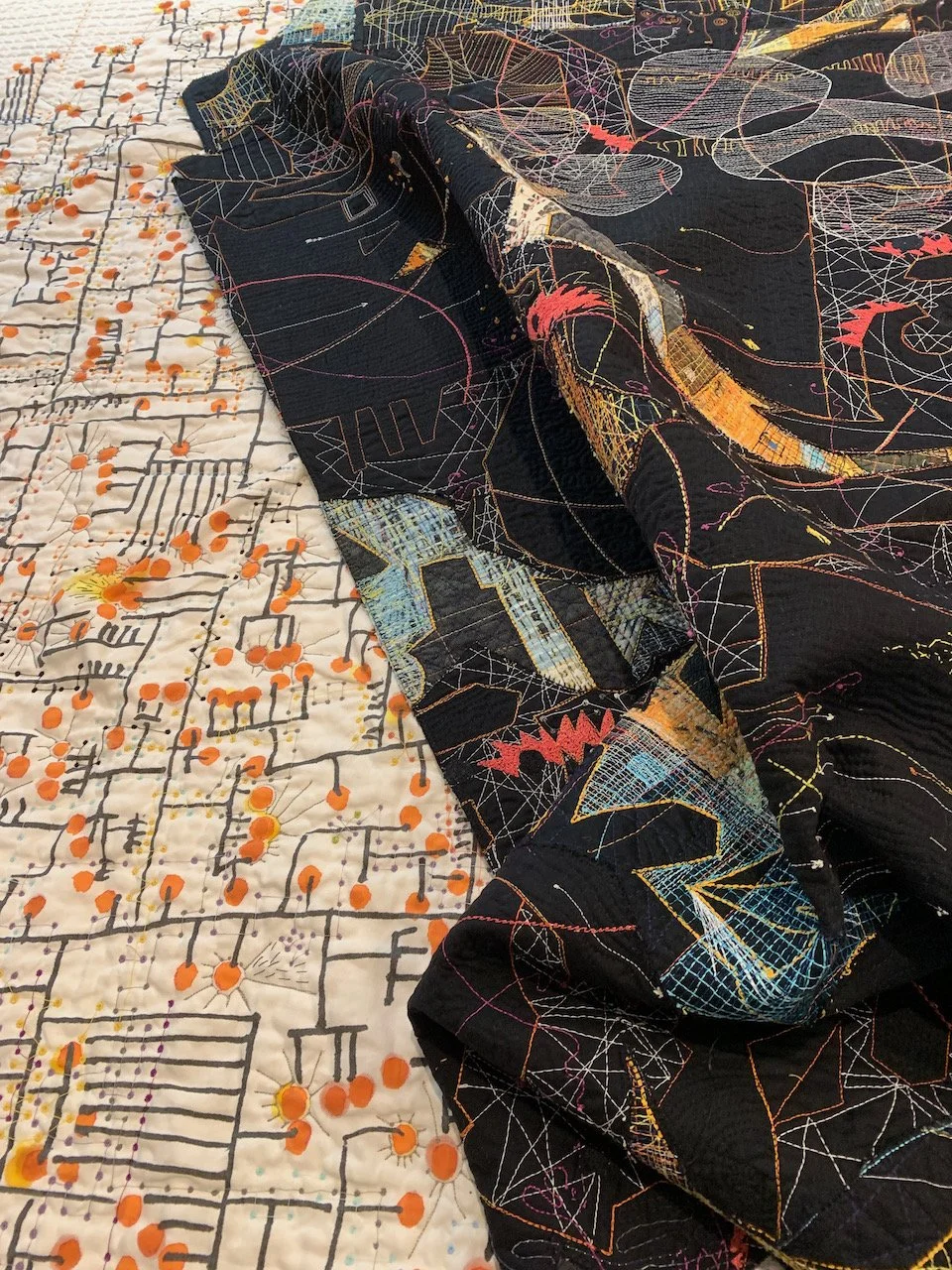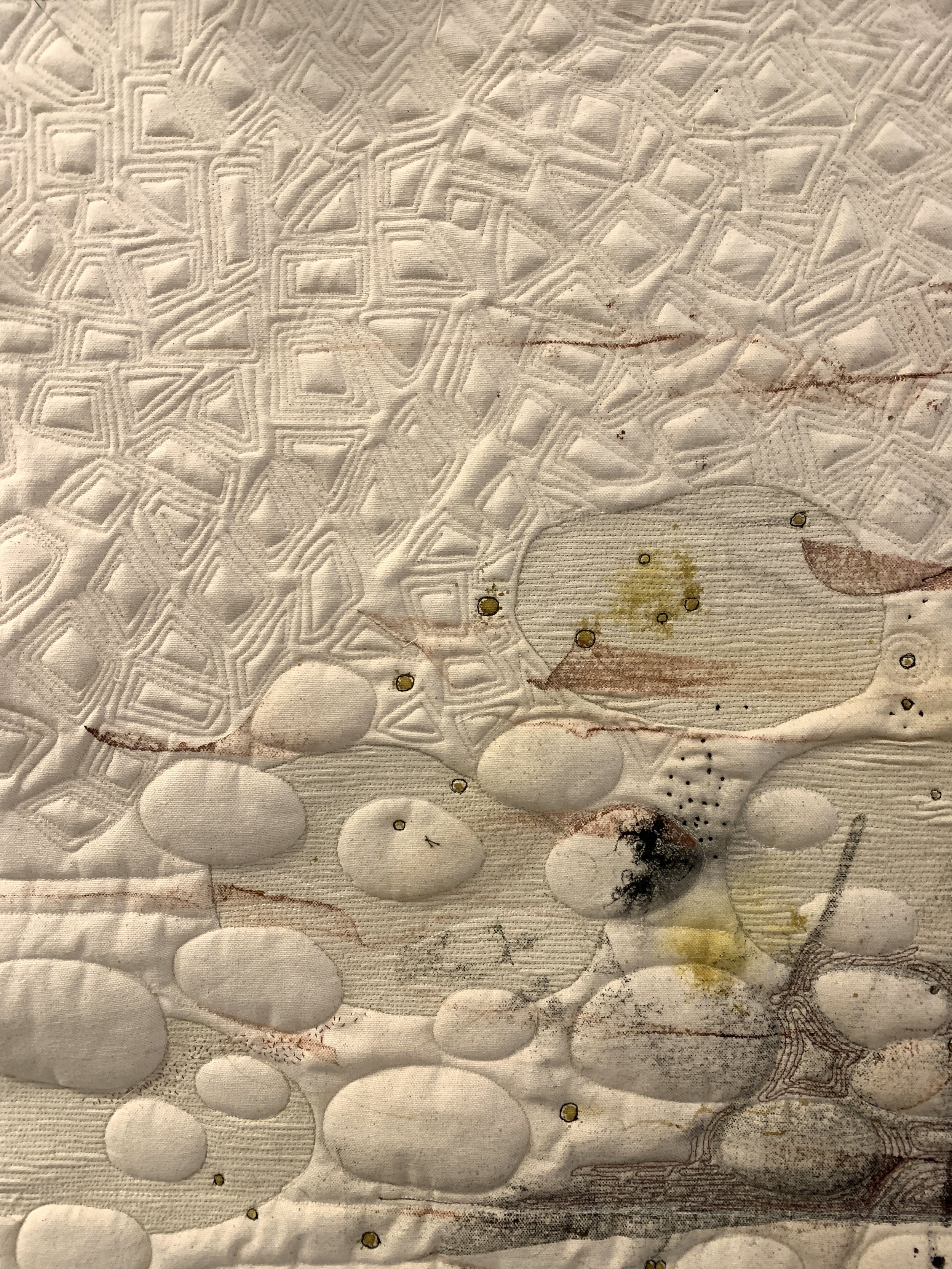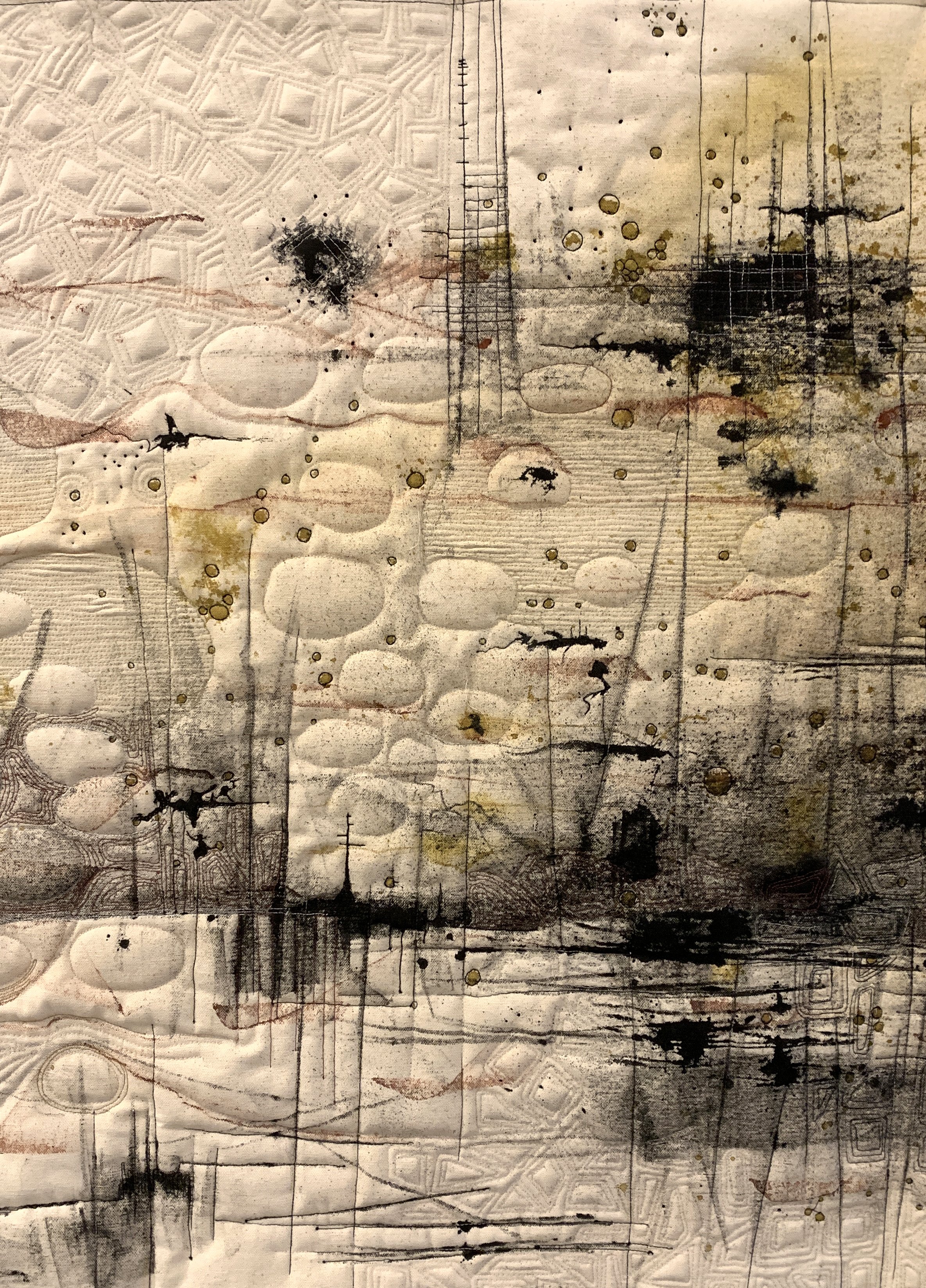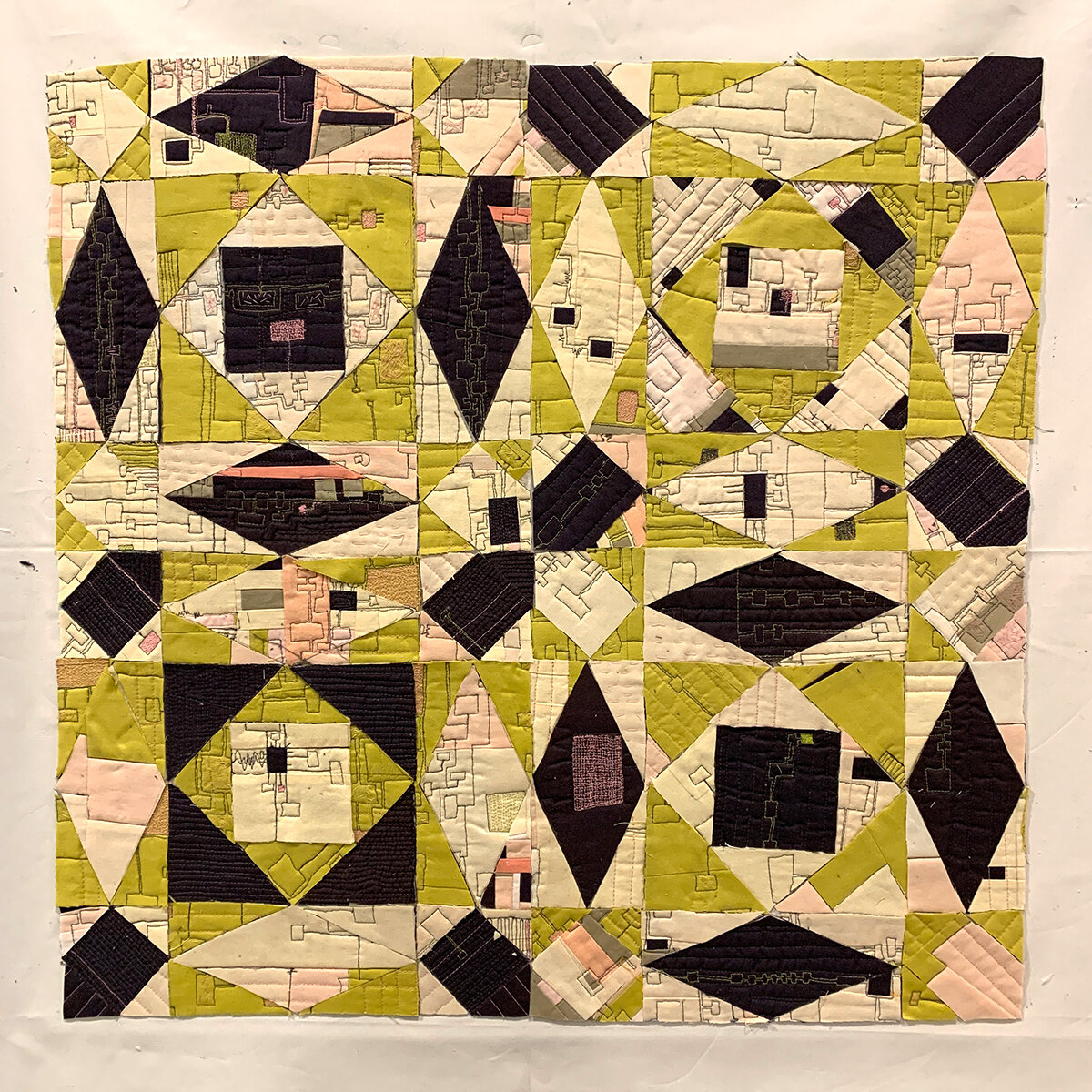It’s impossible to process
I hesitate to post these thoughts. Watching the horror on the news is too big, too evil, too dark. I feel the weight of Ukraine. I feel the weight of our dysfunctional political system and now…Israel and Palestine.
It’s dark. Overwhelming. I can fall into despair with each news segment.
While working on this piece for the past three weeks I started with the idea of those invisible things that happen in biological systems. Blood cells, bacteria, infection, growth, coded genomes, and bodily structures. And also the way soil has populations of organic matter full of life and motion. I wanted the detail and texture to represent the complicated environments within and without.
But then the news got more dire. A congress that can’t get their act together. People banning books. War in Ukraine continuing and winter coming. And then Israel and Palestine.
The piece got darker. and darker.
Incursion, 30” x 46”, canvas, ink, batting. Paula Kovarik
Breathe, breathe.





